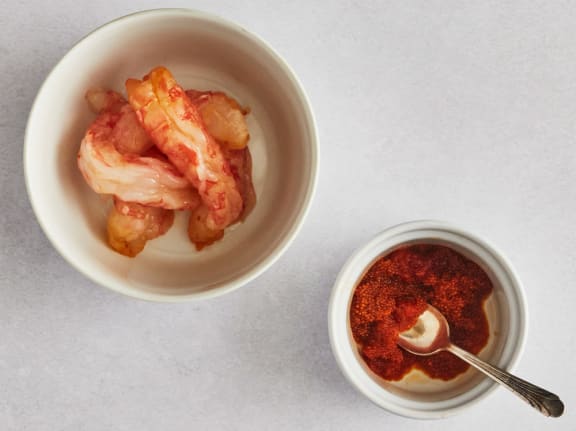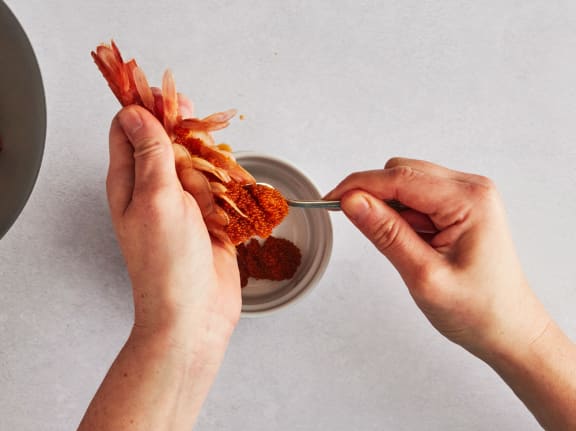Wild shrimp sometimes come with roe attached to the bellies of female shrimp. The roe looks like small, translucent pearls in shades of yellow, orange, and amber. Not all wild shrimp will have roe attached to the belly. Typically, you can expect to only find roe attached to female shrimp that are harvested during spawning season.
What is shrimp roe?
Shrimp roe is a cluster of eggs, resembling caviar. However, caviar is typically cured before being eaten. The roe that you might find attached to wild shrimp is not cured.
Can you eat raw shrimp roe?
We recommend that you do not eat raw shrimp roe, whether from spot prawns or sidestriped shrimp. Eating raw roe that hasn't been cooked or cured can raise the risk of foodborne illness, so it’s best to cook the roe before consumption. Consuming raw or undercooked meats, poultry, seafood, shellfish, or eggs may increase your risk of foodborne illness, especially if you have a certain medical condition.
Is it safe to eat shrimp roe?
Cooked shrimp or prawn roe is just as safe to eat as cooked shrimp. You’ll know it’s done when it turns opaque. Cooking changes the roe’s texture and appearance, making it less like caviar. The flavor is mild and slightly briny
Is shrimp roe good for you?
There isn't much available nutritional data for shrimp roe. However, shrimp roe is generally known to consist of a mix of fat and protein. Since you typically only consume small amounts of shrimp roe, any benefits of eating shrimp roe are likely negligible.
Should you remove shrimp roe?
Yes, in most cases, it’s best to remove shrimp roe before eating the shrimp. Cooked shrimp roe can develop a grainy texture, similar to hard-boiled egg yolks. It can be removed before or after cooking the shrimp, depending on your preference.
How to Remove Shrimp Roe
First, you’ll need to defrost the shrimp. From there, removing the roe is easy. Use a small spoon to carefully scrape the roe from their bellies while their shells are still on. It should come off in bunches.
Be mindful of the fact that the shells of some varieties of shrimp are spiny. We recommend starting at the tail end and scraping the roe up the body toward where the head used to be attached.







